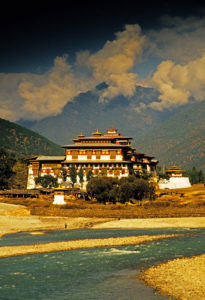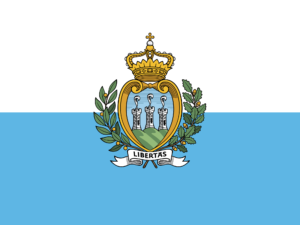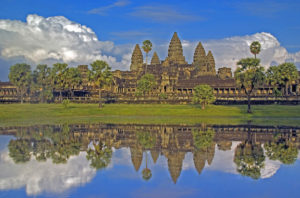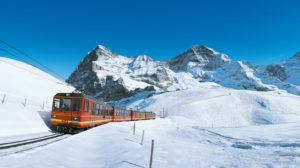
Punakha monastery, Bhutan Photo by Dennis Cox/WorldViews
In our last two posts, we took a look at some of the most popular travel-related bucket list destinations and activities based on a survey of 1,000 travelers by the website TotallyMoney.com. You can view those results, and my comments, by clicking here and here.
While my own experiences with a few of the items — such as gambling in Las Vegas — were on the margins (in the case of Vegas, dropping a few quarters into slot machines), I had pretty much done all those on the list.
My own bucket list tends to be a little quirkier than most. Places that end up on my list are pretty far-flung, represent something I’ve missed in past trips, or are just items that fulfill my admittedly peculiar travel obsessions. (I suspect that a lot of baby boomer frequent travelers’ lists are much the same.)
Maybe because of the travel axiom “the more you see of the world, the more you realize you’ve seen very little of it” — to which I wholeheartedly subscribe — my lists are far too long to detail here.
So — having crossed Antarctica, New Zealand’s Fjordland, Nile cruise, Petra (Jordan), Budapest, Prague, and Buenos Aires off my previous lists in the past few years — I’ll hold it to my current Top Ten, starting with the first five:
My Current Top Five Bucket List Destinations
San Marino: This tiny European country — medieval, mountainous and entirely surrounded by Italy — is an unusual choice and actually has little to do with the merits of the destination, though from what I know it’s quite beautiful and has a fascinating history.

San Marino’s flag — proudly independent.
The reason it’s on my list is that a) it’s the only country in Western Europe that I haven’t visited; b) it will complete my trifecta of visiting every country in the world that’s surrounded by another country (San Marino, Vatican City, Lesotho); c) if all works out, I’ll be going there very soon and can cross it off my list; and d) who could resist a country whose full name is “The Most Serene Republic of San Marino?”
I’m also curious as to how San Marino has remained independent over the centuries. Europe’s third smallest country at just 24 square miles, San Marino’s roots date all the way back to the 3rd century AD. (It’s said to be the world’s oldest surviving sovereign state as well as the world’s smallest republic — only the Pacific nation of Nauru has less land, but its territorial waters make it bigger overall.)
With all the tourists San Marino attracts to supplement its 33,000 permanent population — it’s just six miles from Rimini, Italy, and the Adriatic coast — San Marino may not be too serene, but this little enclave has what it takes to top my bucket list, if only for another couple of weeks.
Cambodia, Laos and Burma: OK, I’m cheating a bit here by including three countries, but they’re all adjacent to each other in Southeast Asia, and I would have a hard time choosing among them. I’ve been to Vietnam, Thailand, Malaysia, Singapore, and Indonesia, but these three have eluded me so far, and to me they represent the heart of steamy, exotic, colorful East Asia, with its eclectic mix of Buddhist temples, colonial architecture, traditional culture, and incredible cuisine.

Cambodia: Angkor Wat Temple. Photo by Dennis Cox/WorldViews
In the case of Cambodia and Laos, they also resonate with history for me and other baby boomers who spent their formative years while the wars in Southeast Asia raged in the Sixties and Seventies. Burma, meanwhile, boasts the mystique of a country that was mostly closed to tourism until a few years ago.
I hope to do them all in the near future via Mekong and Irrawaddy river cruises, which offer access to cities like Burma’s Mandalay and Yangon (Rangoon), Laos’ Vientiane and Luang Prabang, and Cambodia’s Phnon Penh and Siam Reap as well as village life along the rivers and top cultural and historical sites like the ruins of Cambodia’s Angkor Wat, the largest religious complex ever built.
Jungfraujoch, Switzerland: This one has been sticking in my craw for a while. Back in 2004, my wife, Catharine, and I hiked up a smallish mountain outside the Swiss village of Wengen — which sits in the shadow of three magnificent Alpine peaks, the Eiger, the Jungfrau, and the Monch — where we encountered a train station near the top.
The station lay along the route of the Jungfraujoch, which leads through a tunnel up the Eiger to a glacier-covered pass between the Jungfrau and Monch and the highest-elevation train station in Europe at 11,332 feet. Gazing up at the three adjacent mountains — one of Europe’s most incredible views — it’s almost impossible to imagine the little cogwheel train, a remarkable century-old piece of engineering, climbing to such a height.

The Jungfraujoch climbs to the “Top of Europe” Photo from Eurorailways.
Restaurants, snow play (if you wish), hiking trails, and an observatory with panoramic 360-degree views over the valleys below await passengers at the top. But because tickets were pricey at about $150 each (now $200), it was already mid-afternoon, and I wasn’t all that familiar with the train at the time, we decided to pass on an unforgettable experience. I’ve regretted it ever since.
Bhutan: High up in the Himalayas, bordering Tibet and northern India, Bhutan has often been compared to Shangri-La, especially since, like its fictional counterpart, the reclusive kingdom was shut off from the outside world for much of its existence (and was the last country on earth to get TV). While Bhutan is changing rapidly — making a timely visit all the more pressing — its residents still sport traditional dress and the government limits the number of annual visitors, most of whom are well off enough to pay the mandatory per-day, per person minimum expenditure of $250 to $290 — which does include lodging, meals and a guide.
Bhutan also remains, well, quirky, as its stated goal of achieving”Gross National Happiness” — in contrast to the grubbier standard of Gross Domestic Product — would attest. Like Burma, Bhutan is a majority Buddhist wonderland, with monasteries and temples perched high in the mountains. It has only one east-west highway connecting the country, and a hazardous one at that as it winds through the Himalayas, but considering that Bhutan had no paved roads until 1961 — before which travel was limited to walking or horseback — that’s not bad. Fortunately, your trained guides will do the driving.
Lake Titicaca, Peru and Bolivia: Like missing the Jungfraujoch when I had the opportunity, thinking about Lake Titicaca makes me cringe a bit. Not because I don’t think it would be a wonderful destination — I’m sure it would be — but because I once had my chance to go there and I blew it. A magazine editor asked if I’d like to do a feature on Lake Titicaca, but at the time I was fixated on writing about a different destination, which ultimately fell through. By the time I raised the Lake Titicaca idea again, the editor had already assigned the story to a different writer.
So South America’s highest and clearest lake, which is dotted with artificial islands occupied by indigenous peoples, has inched to the top of my bucket list. Plus I’ve never been to Bolivia — home of the world’s largest salt flats and most dangerous highway (though Bhutan’s gives it some heavy competition) — so that’s a huge bonus.
The Next Five:
Bulgaria: Because my favorite movie line of all time — “You want my advice? Go back to Bulgaria.” — is spoken by my favorite actor, Humphrey Bogart, in my favorite movie, Casablanca.
Mongolia: Yaks, yurts, exotic horsemen — what could be better?
Uzbekistan: My biggest world gap is in the “Stans” of central Asia, and Uzbekistan seems like the most interesting of the lot except for possibly Afghanistan, which isn’t too hospitable at the moment.
Albania: This was a closed country for decades, and I’d like to see it before it changes too much. Also, I was within a short distance of it recently but couldn’t go because I was on a cruise, and that’s frustrating.
Georgia: The country, not the state — although I’ve enjoyed my visits to the state. Georgia (the country) seems to be caught between deciding whether it’s part of Europe or part of Asia, and I’d like to do my own investigating.
So that’s my current Top Ten — always subject to change, of course, based on whim or what I’ve read or heard about last. Or, even better, crossing an item off my list.
Update: I can now cross The Most Serene Republic of San Marino off my list. And I loved it. Cambodia, Laos, and Burma, here I come!












3 Responses to San Marino? Bhutan? My Quirky Bucket List